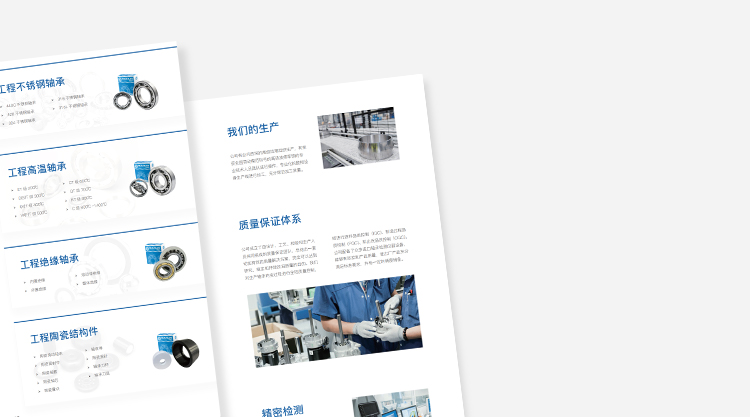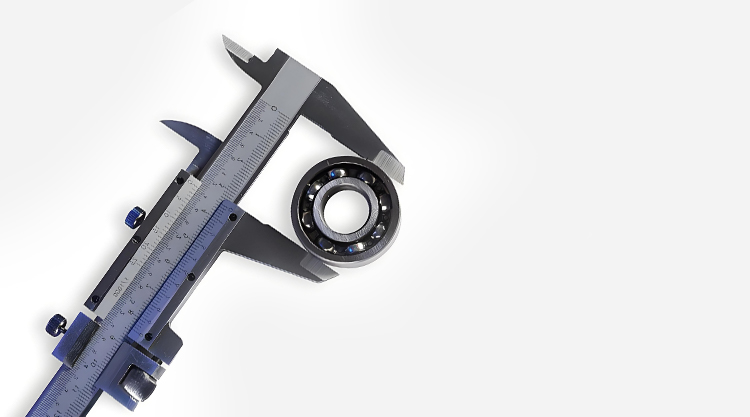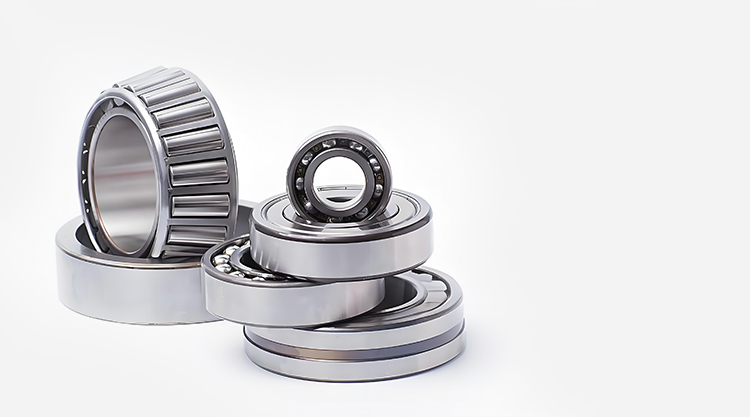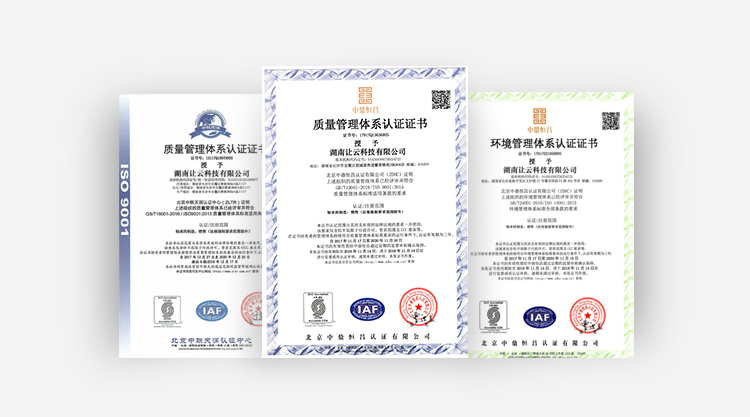Eccentric Bearings: The “Eccentric Adjustment Experts” in Industrial Machinery
In industrial mechanical transmission systems, eccentric bearings are key components for achieving eccentric adjustment of the shaft system and compensating for installation errors. They are widely used in fields such as textiles, printing, and construction machinery. Compared to ordinary bearings, they have significant differences in structural design and functional positioning, which also determine their different adaptability in industrial scenarios.
As industrial equipment demands for precision and stability increase, it becomes crucial to understand the differences between eccentric bearings and ordinary bearings, and choose the appropriate bearing type to ensure efficient operation of the equipment. This article will discuss the basic definition, core differences with ordinary bearings, working principles, classification, application scenarios, and selection criteria of eccentric bearings to help industry practitioners fully understand the core value of eccentric bearings.
I. Basic Definition and Working Principle of Eccentric Bearings
1.1. What is an Eccentric Bearing?
An eccentric bearing is a type of rolling bearing with an eccentric hole in the outer or inner ring. By adjusting the relative position of the eccentric sleeve (or eccentric ring), it can compensate for the center distance deviation between the shaft and the bearing housing, thereby adjusting the transmission clearance and precision. Compared to ordinary rolling bearings, the core advantage of eccentric bearings lies in their "adjustability," enabling them to adapt to shaft deviations caused by installation errors and component wear in industrial equipment.
1.2. Working Principle of Eccentric Bearings
The working of eccentric bearings relies on the combination of "eccentric structure" and "rolling element transmission." The specific process is as follows:
When there is a deviation in the equipment shaft system, the eccentric sleeve (or inner ring) of the eccentric bearing is rotated to change the relative position of the eccentric sleeve to the bearing inner/outer ring, thus adjusting the center position of the shaft;
After adjustment, the eccentric sleeve is locked in place with a nut or positioning pin to ensure a stable center distance during operation;
During operation, the bearing inner ring rotates with the shaft, and the rolling elements roll between the inner and outer ring raceways, transmitting radial or axial loads to the bearing housing. At the same time, the pre-adjusted eccentric amount compensates for the shaft deviation, reducing vibration and noise.
II. Core Differences Between Eccentric Bearings and Ordinary Bearings
In industrial applications, the differences between eccentric bearings and ordinary bearings (such as deep groove ball bearings, cylindrical roller bearings, etc.) are mainly reflected in key aspects such as structural design, core function, and application scenarios. The specific comparison is shown in the table below:
| Comparison Dimension | Eccentric Bearing | Ordinary Bearing |
|---|---|---|
| Structural Design | Outer/inner ring with eccentric hole, some with independent eccentric sleeve, locknut, and other adjustment structures | Inner and outer rings are designed as standard concentric circles, with no eccentric structure, and components are focused on "fixed transmission" |
| Core Function | The core is "adjustment + transmission," capable of transmitting loads while compensating for shaft deviations, installation errors, and adjusting transmission clearance | The core is "stable transmission," responsible only for transmitting radial/axial loads, without adjusting shaft position or compensating for deviations |
| Application Scenarios | Suitable for equipment with easy shaft deviation and high precision requirements, such as textile machinery roller shafts, printing machinery pressure rollers, and construction machinery gearboxes | Suitable for equipment with precise shaft installation and no deviation requirements, such as ordinary motor rotors, water pump shafts, and conveyor rollers |
| Installation and Maintenance | Installation requires additional adjustment of the eccentric sleeve position, requiring professionals to control the eccentric amount. Later maintenance can restore precision by re-adjusting | Installation is simple and matches standard sizes; once worn, the entire bearing must be replaced without adjustment |
| Performance Characteristics | Strong adjustability, but due to the eccentric structure, the rated load is slightly lower than ordinary bearings. High-speed stability depends on high precision | Strong versatility, with more stable load-bearing capacity for the same specifications, suitable for medium to high-speed scenarios, and relatively lower cost |
III. Main Classifications of Eccentric Bearings (by Structure and Use)
In the industrial field, the classification of eccentric bearings should consider both structural features and application scenarios. The common types are as follows:
| Outer Ring Eccentric Bearing | The eccentric structure is set in the outer ring, suitable for scenarios where the shaft diameter is fixed and the center distance between the bearing housing and the shaft needs adjustment, such as roller shaft drives in textile machinery; |
|---|---|
| Inner Ring Eccentric Bearing | The eccentric structure is set in the inner ring, suitable for equipment where the bearing housing is fixed and the gap between the shaft and bearing housing needs adjustment, such as pressure roller shaft components in printing machinery; |
| Cylindrical Roller Bearing with Eccentric Sleeve | An independent eccentric sleeve is added to the cylindrical roller bearing, providing a larger adjustment range and stronger load-bearing capacity. It is commonly used in gearboxes in construction machinery; |
| Micro Eccentric Bearing | Small eccentric bearings with an outer diameter less than 20mm, suitable for scenarios where space and precision requirements are high, such as rotor shaft adjustment in small motors; |
IV. Core Application Scenarios of Eccentric Bearings (Key Industrial Fields)
The "adjustability" of eccentric bearings makes them indispensable components in multiple industrial fields. The following are typical application scenarios:
| Textile Machinery | In the roller transmission systems of carding machines and spinning machines, eccentric bearings are used to compensate for the installation deviation of the roller shafts, ensuring uniform pressure between rollers and preventing yarn breakage or fuzzing; |
|---|---|
| Printing Machinery | In offset printing presses, eccentric bearings are used to adjust the center distance between the printing cylinder and the rubber roller, ensuring the registration accuracy of printed patterns and reducing double images or misalignment; |
| Construction Machinery | In the travel gearbox of excavators and loaders, cylindrical roller bearings with eccentric sleeves can compensate for shaft deviations caused by gear wear, improving gearbox transmission efficiency and service life; |
| Machine Tools | In spindle components of lathes and milling machines, micro eccentric bearings are used to adjust the parallelism between the spindle and guide rail, reducing vibration during the machining process and improving workpiece machining accuracy; |
-
20 2025.10Comprehensive Guide to Industrial Bearing Lubrication: Method Selection
In mechanical transmission systems, bearing lubrication directly determines equipment lifespan and energy efficiency.
-
20 2025.10Mounted Bearings: A Complete Guide to Structure, Selection, and Application
Pillow block bearings, as bearing units that integrate rolling bearings with bearing housings, have become indispensable fundamental components in modern industrial equipment.
-
20 2025.10Low-Temperature Bearing Performance at -200°C Revealed
This article will delve into how cryogenic bearings maintain their performance under such extreme conditions.
-
20 2025.10How is bearing life calculated? Key factors affecting service life
This paper will delve into the calculation methods for bearing life and the primary factors affecting bearing life based on actual operating conditions.




